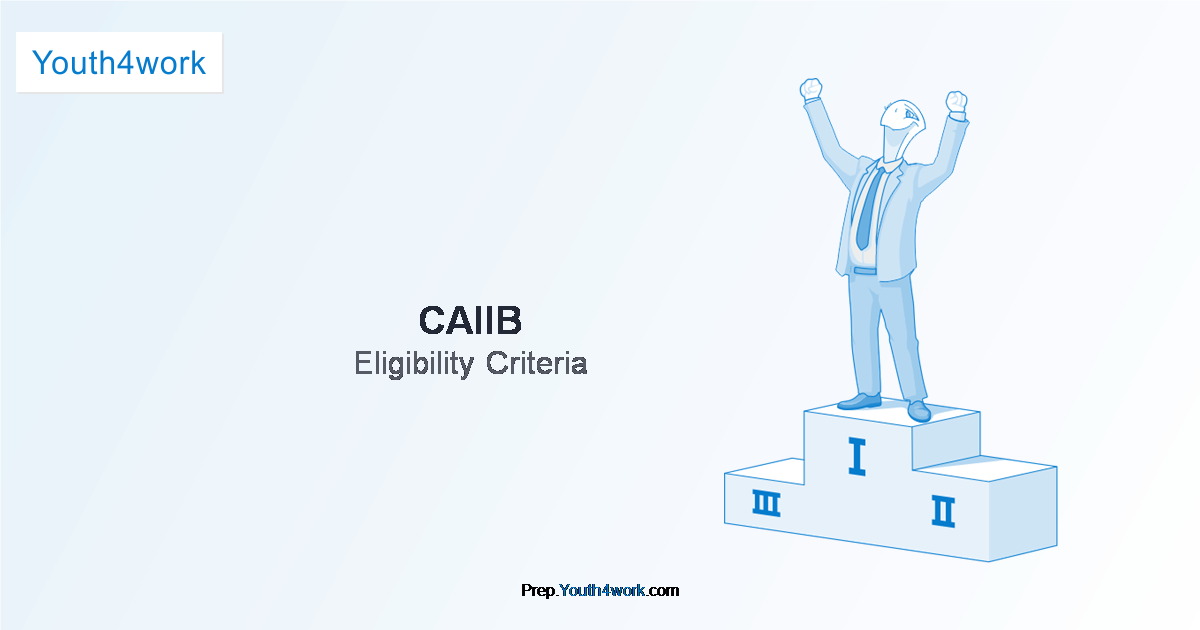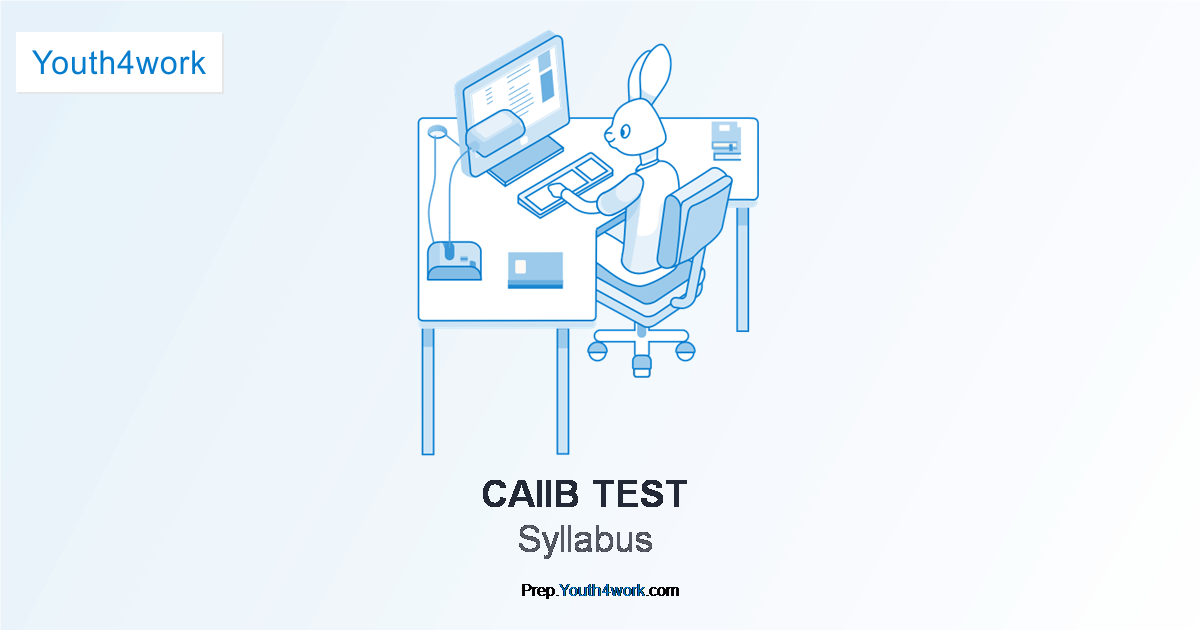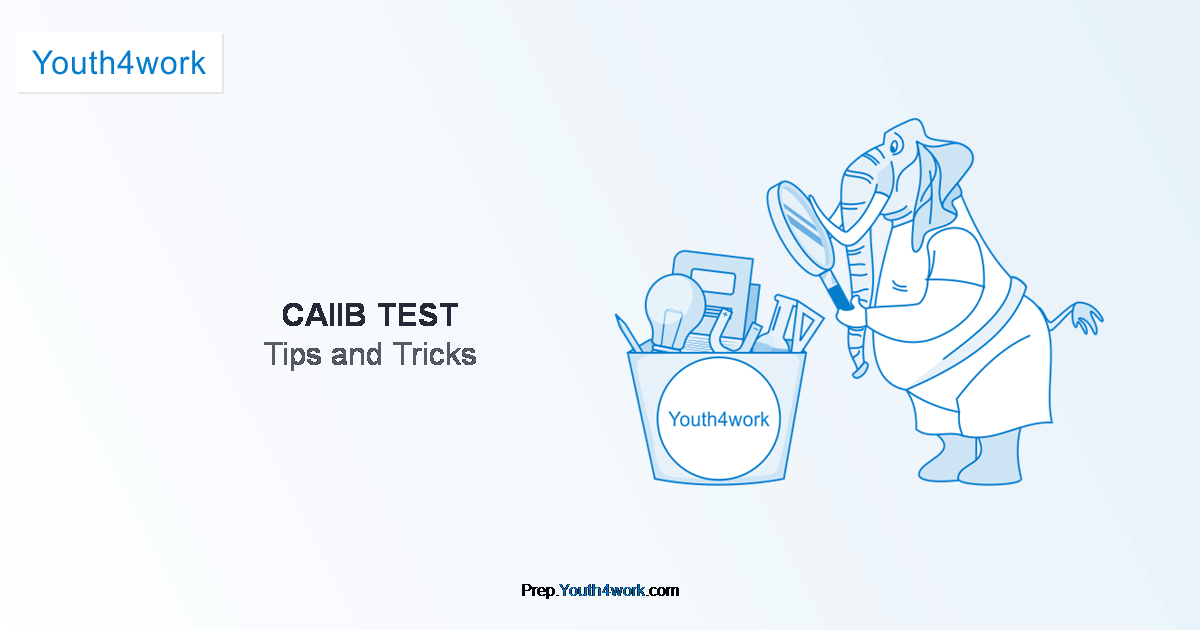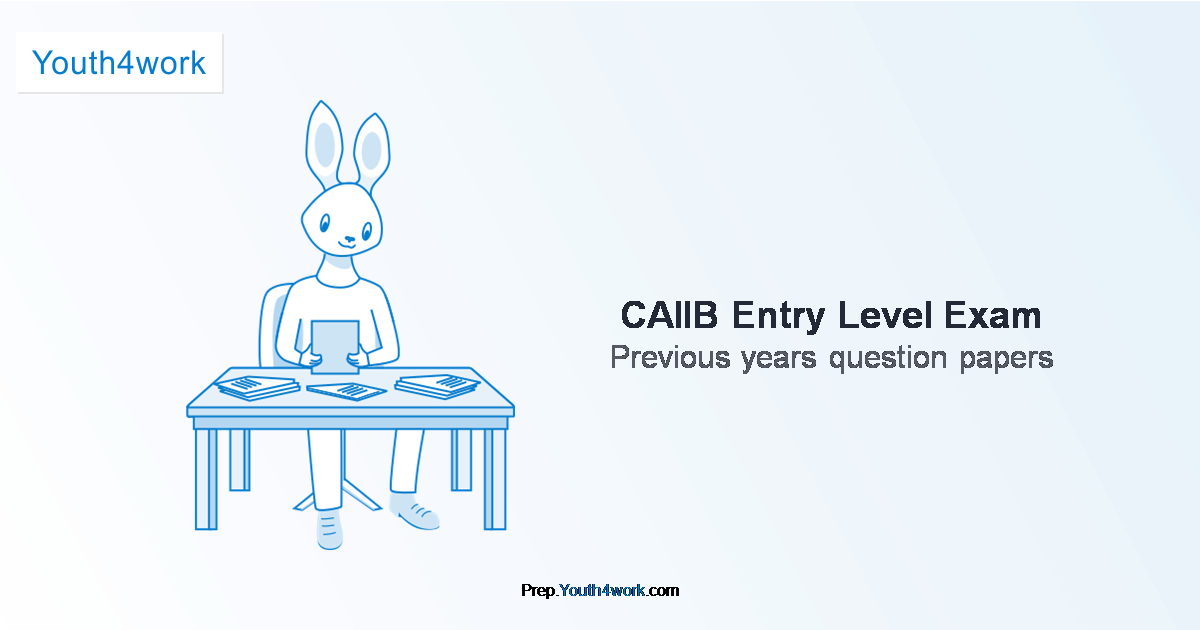
CAIIB Exam: Exam Pattern, Insights and Details
CAIIB is conducted by IIBF after clearing out JAIIB. CAIIB has three papers each of 120 minutes duration. One is elective and two are compulsory. The eligibility standard for the candidates is that- he/she must have cleared IIBF JAIB exam and should not have any backlogs. The validity of CAIIB is 2 years. The passing marks are minimum 50%. The papers are as follow: Compulsory Paper- Advanced Bank Management & Bank Financial Management and Elective paper- Corporate Banking, Human Resources Management, Rural Banking, Information Technology, International Banking, Risk Management, Retail Banking, Central Banking, Co-operative Banking, Treasury Management & Financial advising. To know more about the exam, tap the links below:
Exam Pattern | Syllabus | Eligibility Criteria | Tips and Tricks | Take Free Mock Tests
Key Highlight
of Caiib

Educational Qualification:
He/she must have cleared JAIB by IIBF and should not have any backlog.

Exam Duration:
120 minutes

Total marks:
100 marks

REGISTRATION:
From 1 April to 7 April 2020

Exam Date:
7, 14, 21 June 2020
Eligibility for CAIIB Exam
Nationality / Citizenship: The candidate must be an Indian Citizen.
Educational Qualification:
He/she must have cleared JAIB by IIBF and should not have any backlog.
CAIIB Exam: Exam Pattern
- Each paper will be of 100 marks.
- Each paper will have 100 MCQs type questions
- Total duration of each paper will be 120 minutes
- Medium of language of the questions will be English
- Three papers: 2 Compulsory & 1 Elective
- Compulsory Paper-
- Advanced Bank Management
- Bank Financial Management
- Elective paper (candidate can pick any one the below) -
- Corporate Banking
- Human Resources Management
- Rural Banking
- Information Technology
- International Banking
- Risk Management
- Retail Banking
- Central Banking
- Co-operative Banking
- Treasury Management
- Financial advising
Syllabus: CAIIB Exam
Advanced Bank Management
Economic analysis, Interest rates, Market trends, Micro and macroeconomics, Association between monetary and fiscal measures, Role of banking and money in the economy, Business mathematics, Sampling methods, Time value of money, Basic statistics, Probability techniques, Bond investments, Credit management, Financial ratios
Bank Financial Management
Banking and Financial Services, Balance Sheet Management, International Banking, Risk Management (Risk in Banking Business, Regulations in Banking Industry, Market Risk, Credit Risk and various other aspects of field, Risk Management: Financial Futures, Risk Management for Changing Interest Rates, Assets- Liability Management and Duration Techniques, Asset- Backed Securities, Loan Sales, Credit Standbys and Credit Derivatives, Treasury Management sectors, International Banking, Forex Business, Exchange Rates, Basics of Forex Derivatives, Correspondent Banking, The Organization and Structure of Banking and the Financial-Services Industry, Establishing New Banks, Branches, ATMs, Telephone Services and Web Sites, Financial Statements and Financial Firm Performance, Measuring and Evaluating the Performance of Banks, Managing Investment Portfolios and Liquidity Positions for Financial Firms, Investment Function in Banking and Financial Services Management, Liquidity and Reserve Management: Strategies and Policies, Managing Sources of Funds for a Financial Firm, Managing and, Pricing Deposit Services, Managing Non-deposit Liabilities, Investment Banking, Insurance and other Sources of Fee Income, The Management of Capital, Providing Loans to Businesses and Consumers, Lending Policies and Procedures, Consumer Loans, Credit Cards and Real Estate Lending, Managing the Future in a Global Marketplace, Acquisitions and Mergers in Financial-Services Management, International Banking and the Future of Banking and Financial-Services, NRI accounts and Role of ECGC, FEMA and FEDAI
Corporate Banking
Financing, Cash management, Issues of stocks and bonds and underwriting services, Projects and Infrastructure, Finance and Investment Banking, Merchant Banking, Corporate Advisory Services, Managing Risks in Project Financing, Features of Project Finance
Human Resources Management
Human Resource Policies, Procedures and Program, Challenges of HRM: Workforce Diversity, Empowerment, Downsizing, VRS and HR Information System, Human Resource Planning, Job Analysis, Description and Specification, Recruitment, Selection: Test and Interview, Placement, Induction and Rightsizing, Employee Training, Management (Executive) Development, Career Planning and Development, Performance Appraisal, Job Changes: Transfer, Promotion and Demotions, Employee Compensation, Job Evaluation, Employee Health and Safety, Employee Welfare, Grievance Handling and Redressal Industrial Disputes
Rural Banking
Different dimensions of rural banking in the country, Various schemes and program, introduced for rural development, Rules and regulations introduced from time to time, controlling authorities in rural banking, Roles of all financial institutions working in rural areas, Basic features of rural economy, Financial services in the rural areas, Priority sector lending, Poverty alleviation program, Provision for housing and education loans, Problems and prospects of rural banking, Micro-credit and self-help groups
Information Technology
Introduction to Information Technology, Information Systems and Technology, Banking Technology Applications and Management, Information System Security Controls and Audit, Computing, Introduction to Software, Networking Systems, Database Management Systems, Introduction to Information Systems, Data Warehousing and Data Mining, Electronic Clearing and Settlement Systems, Banking Software, Plastic Money, RBI Reports on Technology, Electronic Commerce and Banking, System Security Controls and Audit, Computer Security, Communication Security, Information System Audit, Disaster Management, Competitive Bid Process – RFP and SLA
International Banking
Various aspects of International Banking, Recent changes in the functioning, Evolution of the global monetary system, Dynamic global foreign exchange, Money markets with particular reference to the Indian markets, Various methods through which export and import transactions can be Financed, Derivative transactions for hedging risks from currency exposures, Risks and the challenges in today's liberalized global markets.
Risk Management
Risk identification assessment and management, Blueprint assessing and mitigating risk, Risk processes and practices, Specific risk management technique, Contractor risk management, List of risk sources, Basic probability concepts, Quantifying expert judgement
Retail Banking
Different strategies, Business silos, channels, products and services, Retail model, Innovations of products, processes, People and technology, Floating Rate Term Deposits, Loans Against Shares and Debentures, Mobile Banking
Central Banking
Functions of central banks, Evolution of central banking in India, Monetary policy and credit policy, Relationship between fiscal and monetary policy, Evolution of regulation and supervision, Financial stability
Co-Operative Banking
History and structure of cooperative institutions in India, Modalities and laws related to banking operations, Various deposits and advances products including those under Priority sector, Various guidelines of RBI/NABARD, Investment strategies, Instruments covered under investment management
Treasury Management
Treasury organization, Functions, products, management, Interest rate quotations, Market terminology, Capital market instruments
Financial Advising
Indian economic scenario, Various players in the Indian financial system, Regulators, Various investment opportunities, Benefits under various tax-saving provisions of the Income Tax Act
Preparation Tips for CAIIB Exam
· You need to finish 3 papers of CAIIB Exam within 120 minutes each, which means you need speed with accuracy in order to attempt 100 questions each. The more you practice, the better chances you have of acing this exam.
· Manage your time properly; give an appropriate amount of time to each section. Try to improve your time by practicing as many online tests as possible. Youth4work provides online mock tests will time limit attached to each question; this way one can learn to finish the entire exam within the time limit.
· Studying in a stretch for hours can be tedious and hard and also not so good. Therefore, try to study several times in regular sessions during a day. This will make learning easy and fun, also you will have enough time to brush up the already studied topics in between intervals.
· It is very important to maintain proper health, so you don’t fall sick on the big day. Give your brain an appropriate time to refresh itself. Don’t rush too much information into your head than its limit allows. Take it slow and steady. And get at least eight hours of sleep each night.
Youth4work Prep Tests
Online practice tests for competitive exams – are very unique and popular among aspirants. Aspirants can take self-designed mock-tests as well as practice for sections and topics separately. Youth4work’s unique and proprietary technology is helping lakhs of aspirants to reveal personal details on what are the strength areas of aspirants for any exam and also suggest how they can improve the performance.
Following are interesting insights from nearly lakhs of question attempts on CAIIB practice tests on Youth4work. Every aspirant is rated on a Rating Scale. The ratings of the aspirants change with every question attempt.
Downloads
Case Study, Notes, Previous Year Paper
Discussion Q & A's of
Youths with similar talents will answer your query.







